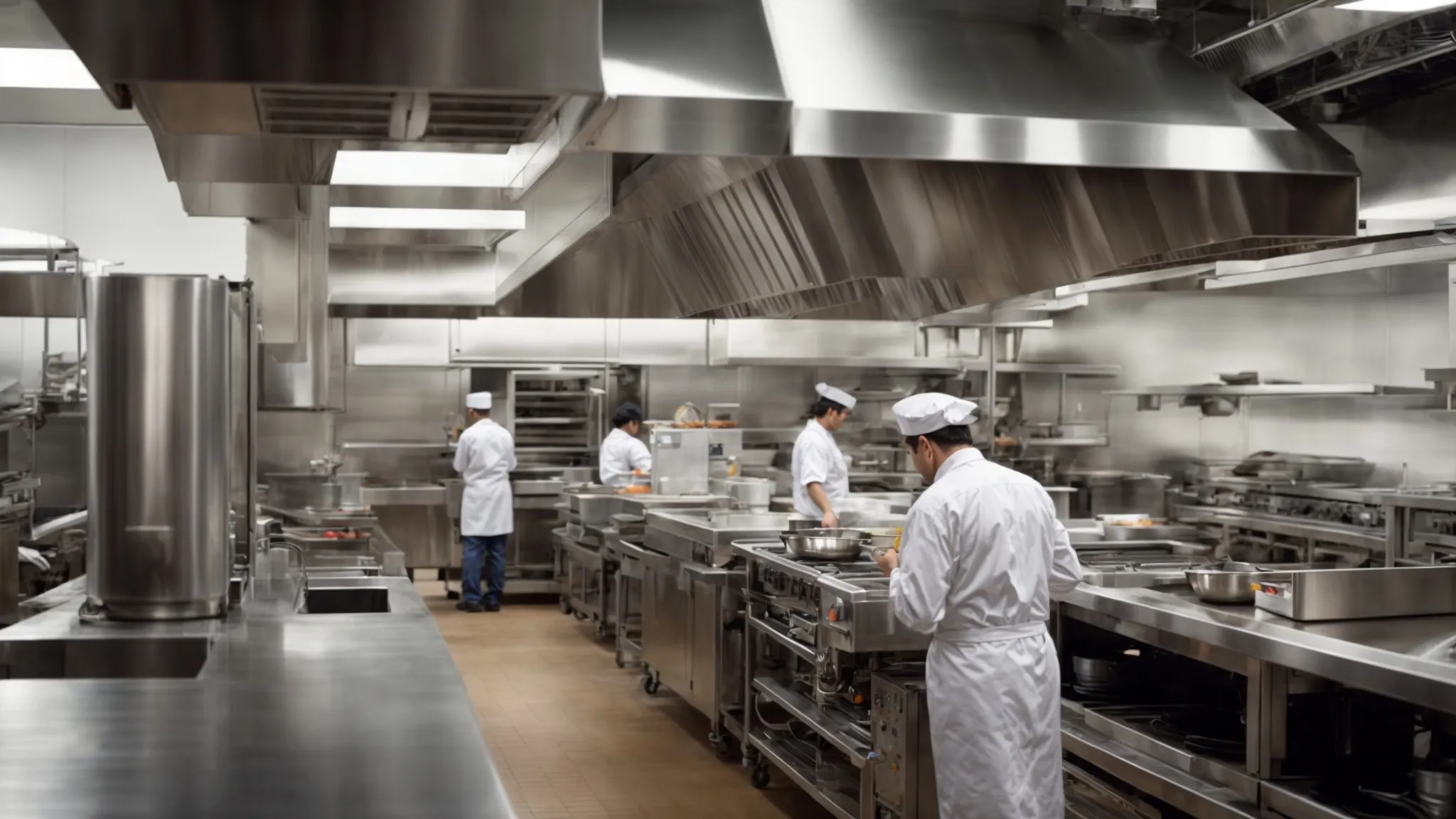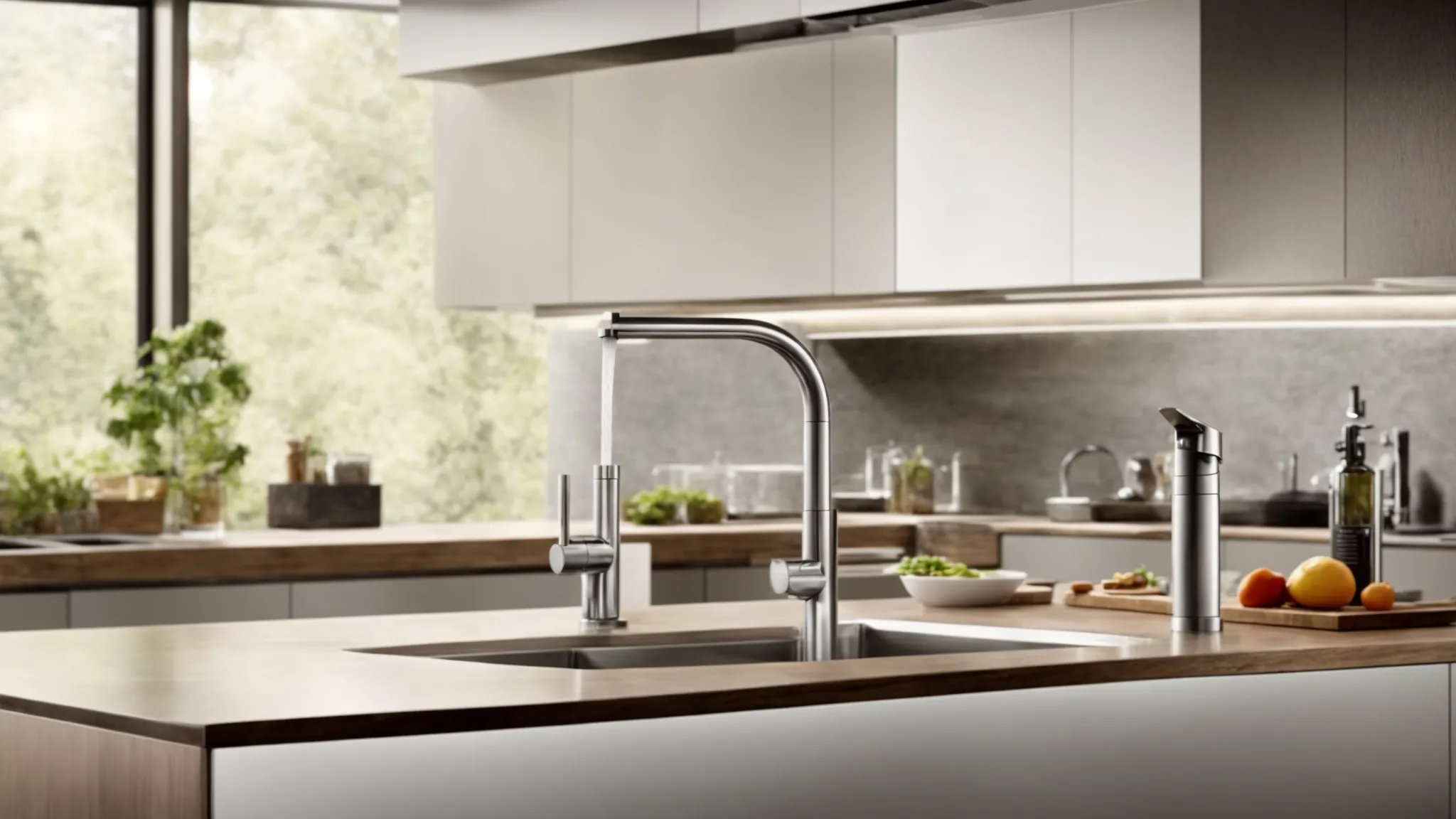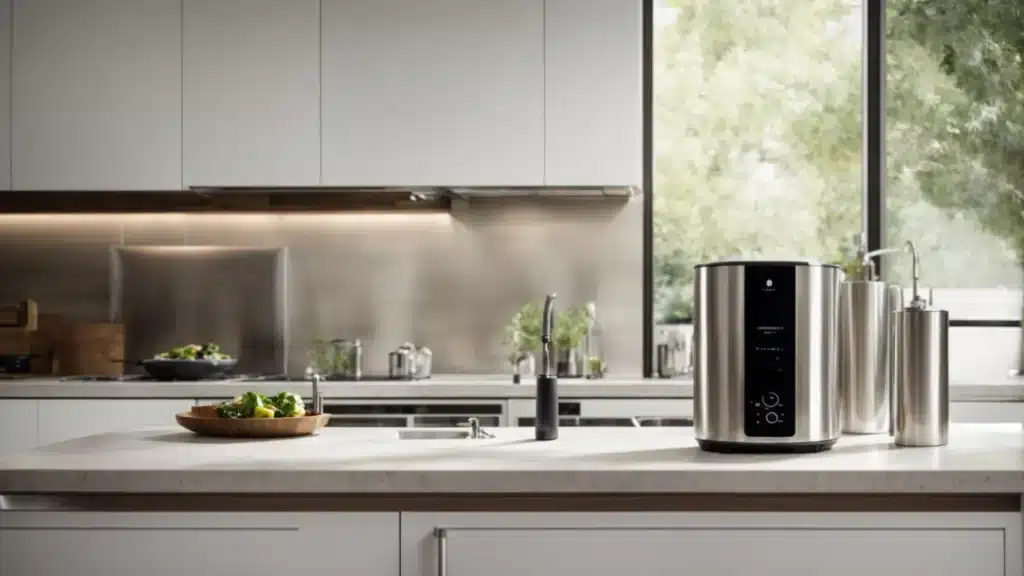Latest Trends in Kitchen Hygiene and Safety
Essential Updates in Kitchen Safety and Hygiene for 2023
As we step into 2023, the landscape of kitchen safety and hygiene is experiencing a significant transformation, driven by innovation and technology.
From smart appliances that ensure food is stored and cooked at optimal temperatures, to non-toxic cleaning agents that guarantee a safer environment for food preparation, the advancements are both exciting and essential for modern kitchen hoods.
Additionally, the implementation of cutting-edge cutlery and touchless technology is setting new standards in reducing cross-contamination and enhancing overall kitchen operations.
Keep reading to discover how these updates can revolutionize the way we think about kitchen safety and hygiene.
Introducing Smart Appliances for Enhanced Kitchen Safety
Contact Us
As we continue exploring the pivotal upgrades in kitchen safety and hygiene for this year, it’s clear that technology plays a starring role.
My attention recently veered towards the innovation behind smart appliances, notably smart ovens, and sensor-equipped faucets, which are setting new standards for safety and cleanliness in commercial kitchens. Contact Us
Smart ovens, equipped with advanced sensors, are ingeniously designed to mitigate the risk of cooking fires by automatically adjusting temperatures or shutting off when necessary.
On a parallel note, the introduction of a kitchen hood equipped with sensors not only streamlines the cooking process but significantly elevates hygiene standards by minimizing touchpoints and thereby, the spread of contaminants. Contact Us
These technologies underscore a profound shift towards smarter, safer, and more hygienic commercial kitchens.
Let’s delve deeper into how these smart appliances are redefining safety protocols in the culinary world.

How Smart Ovens Prevent Cooking Fires
The advent of smart ovens has revolutionized kitchen safety by tackling one of the most common risks head-on: cooking fires. With the integration of advanced sensors, these ovens are able to detect unusual spikes in temperature or smoke levels, effectively taking action to either adjust the temperature automatically or shut down Areas Served to prevent potential fire hazards.
It’s fascinating to see how this technology not only enhances safety but also provides peace of mind for chefs and kitchen staff. The precision with which these kitchen hood ovens operate allows for a safer cooking environment, ensuring that attention can be devoted to crafting exceptional dishes without the looming threat of a cooking-related fire disrupting operations. Visit Our Blog for more insights into kitchen safety.
The Role of Sensor-Equipped Faucets in Hygiene
Turning our focus to sensor-equipped faucets, their significance in upholding higher hygiene levels within commercial kitchens is undeniable. These faucets are on the frontlines in the battle against cross-contamination, enabling kitchen staff to wash hands and rinse foods or utensils without the need to physically touch the faucet, thus dramatically reducing the potential for the spread of germs and bacteria.
Moreover, the adoption of these advanced kitchen hood fixtures aligns seamlessly with the ongoing efforts to create safer and more efficient working environments. By minimizing the touchpoints within a kitchen, we significantly lower the risk of illnesses that can easily disrupt the smooth operation of a busy commercial kitchen. It’s a step forward in ensuring that food safety is paramount and that hygiene practices comply with the highest standards.
Implementing Proper Food Storage Techniques in 2023

Turning our attention towards the paramount aspect of kitchen safety and hygiene, we encounter the realm of food storage techniques, a field that has seen its fair share of innovations in 2023.
Amidst these advancements, leveraging intelligent containers to preserve food freshness emerges as a game-changer, underscoring the fact that technology and culinary hygiene now go hand in hand.
Coupled with this, the undebatable significance of strict temperature control reinforces the framework of food safety practices.
As we unfold these topics, it becomes evident that integrating these strategies not only combats the risk of foodborne illnesses but also extends the shelf life of ingredients, thus marrying efficiency with safety in commercial kitchen operations.
Using Intelligent Containers to Prolong Freshness
The pivot towards intelligent containers in 2023 speaks volumes about our commitment to heightened kitchen hygiene and efficiency. These containers, embedded with technology that monitors air quality and temperature inside, actively work to extend the life of perishable goods: a crucial step in combating food waste and ensuring food safety.
| Feature | Benefit |
|---|---|
| Smart Monitoring | Automatically adjusts internal conditions to maintain freshness |
| Temperature Regulation | Prevents spoilage by keeping a consistent, ideal temperature |
| Air Quality Control | Reduces the risk of contamination and slows down food decay |
By integrating these intelligent containers into daily operations, commercial kitchens are setting a new benchmark for safety and efficiency. This technology not only preserves food longer but also ensures that the nutritional value is retained, making it a win-win for both restaurateurs and patrons alike.
The Importance of Temperature Control in Food Safety
Temperature control is a cornerstone of food safety that cannot be overlooked. It ensures that harmful bacteria do not have the opportunity to grow, making it integral to maintaining the integrity of ingredients from storage to serving. The careful monitoring and regulation of temperature, whether in refrigeration units or during cooking processes, safeguards against foodborne illnesses, preserving the reputation of any culinary establishment.
In my experience, consistent temperature control acts as an invisible shield in commercial kitchens, protecting both staff and patrons. It demands vigilance and adherence to specific temperature guidelines, aspects that technology has made more manageable through advanced monitoring systems. Embracing these innovations is not just about compliance; it’s about demonstrating a commitment to the highest standards of kitchen safety and hygiene.
Advances in Non-Toxic Cleaning Solutions for Kitchens

Shifting our focus to the cleanliness of our kitchens, we notice significant strides toward adopting more sustainable and health-conscious practices.
It’s this drive for a safer environment that has spotlighted the potential of non-toxic cleaning solutions.
These advancements are not just a nod towards environmental responsibility but are fundamental to safeguarding our health.
Exploring the efficacy of plant-based cleaning agents represents a cornerstone in this journey, promising powerful cleansing without harsh chemicals.
Similarly, the resurgence of DIY recipes for safe and natural cleaners offers a personalized approach to kitchen hygiene, tapping into the timeless wisdom of using ingredients found in our own pantries.
Together, these topics underscore a transformative shift in how we approach the cleanliness of our commercial kitchens—prioritizing safety, sustainability, and health.
Identifying Effective Plant-Based Cleaning Agents
In my journey through the evolving landscape of kitchen safety and hygiene, I’ve unlocked the potential of plant-based cleaning agents as pivotal allies. These eco-friendly warriors, derived from nature’s own arsenal, stand out for their gentle yet effective cleansing prowess, proving that strength and safety can coexist harmoniously in our commercial kitchens.
The pursuit of identifying effective plant-based cleaning agents has led me to discover formulations that not only break down grease and grime with remarkable efficiency but also ensure the air and kitchen hood we interact with remain free from toxic residues. This transition to greener alternatives marks a significant step forward in our collective mission to foster healthier environments within Ontario’s bustling culinary scene.
DIY Recipes for Safe and Natural Cleaners
Exploring DIY recipes for safe and natural cleaners has illuminated a path where safety and sustainability intersect seamlessly within the kitchen. The creation of these solutions from common and accessible ingredients signifies a return to the basics, fostering a kitchen environment that is not only clean but also free from harsh chemicals.
These home-crafted mixtures offer an extraordinary blend of effectiveness and simplicity, capable of tackling tough stains and buildups without compromising the health of kitchen staff or patrons. Embracing the DIY approach empowers us to take control over our cleaning practices, ensuring they align with our commitment to a safer, greener kitchen.
| Ingredient | Purpose | Benefit |
|---|---|---|
| Vinegar | Cleans & Disinfects | Non-toxic, breaks down grease |
| Baking Soda | Deodorizes & Scrubs | Eco-friendly, gentle abrasive |
| Essential Oils | Enhances Scent | Adds antimicrobial properties |
Embracing Cutlery Innovations for Safer Kitchen Operations

As we navigate the continuous evolution of kitchen safety and hygiene, a critical area coming into focus is innovation around cutlery.
This year, notable advancements have not only aimed to sharpen culinary skills but also to ensure that safety and hygiene are at the forefront of kitchen operations.
Among these enhancements, the introduction of ergonomic knife designs and anti-microbial cutting boards has caught my attention.
These innovations aren’t just minor updates; they’re essential tools in our ongoing quest to ensure that kitchen environments are both safe and efficient.
Ergonomic knives are designed to minimize strain and injury, significantly improving comfort and precision during use.
Conversely, anti-microbial cutting boards are pioneering new grounds in hygiene, offering an effective defence against the cross-contamination of ingredients.
These updates mark a significant leap forward in our aspiration to create safer, more hygienic kitchens in 2023.
The Benefits of Ergonomic Knife Designs
The pivot towards ergonomic knife designs is not just a trend; it’s a movement toward enhancing safety and efficiency in the kitchen. By adopting these specially designed knives, we are mitigating the risk of repetitive strain injuries, which are all too common among culinary professionals.
This evolution in cutlery design is underscored by the significant benefits it brings to kitchen operations: improved precision and reduced fatigue. It’s the kind of innovation that transforms daily tasks into a more enjoyable, less hazardous process:
- Enhanced comfort during prolonged use minimizes the risk of cramps and strains.
- Increased control and precision in cutting techniques.
- Reduced incidence of accidents due to slips or improper handling.
Introduction to Anti-Microbial Cutting Boards
The introduction of anti-microbial cutting boards is a significant stride towards creating kitchens that are not only functional but inherently safer. These cutting boards come embedded with technology designed to ward off microbial growth, thus ensuring that surface contamination is drastically reduced.
By incorporating these cutting boards into daily kitchen operations, we directly address the critical issue of cross-contamination among foods. The integration of this technology marks a pivotal move towards upholding the highest standards of hygiene and safety in the kitchen:
- Reduces the risk of bacterial spread during food preparation.
- Supports a cleaner, safer kitchen environment.
- Enhances the overall food safety measures undertaken by culinary establishments.
Upgrading to High-Efficiency Ventilation Systems

Stepping into the realm of ventilation systems, the journey towards enhancing kitchen safety and hygiene takes an upward trajectory.
Recognizing the profound impact high-efficiency ventilation systems have on air quality and health is a game changer.
My experience underscores that not all kitchens are created equal—it’s imperative to tailor the choice of a ventilation system to the specific needs and dimensions of your kitchen.
This approach not only optimizes functionality but also ensures a significant improvement in the health standards of commercial kitchens.
Let’s navigate through the key aspects of selecting an appropriate system, focusing on optimizing air quality and ensuring it aligns perfectly with the size and operation of your kitchen.
Exploring the Impact on Air Quality and Health
Exploring the profound impact of high-efficiency ventilation systems on air quality and health has reaffirmed my belief in their necessity for any commercial kitchen. These systems do more than just regulate temperature; they play a critical role in removing contaminants from the air with a kitchen hood, significantly reducing the risk of respiratory issues among kitchen staff and patrons alike.
In my journey to uncover the essence of kitchen safety and hygiene updates for 2023, it became clear that optimal air quality is non-negotiable. High-efficiency ventilation systems, including kitchen hoods, stand out as indispensable allies, ensuring that airborne particles, including harmful pathogens and allergens, are efficiently filtered out, safeguarding the health of everyone in the environment.
Choosing the Right System for Your Kitchen Size
Choosing the right ventilation system for your kitchen hood size is more than just a matter of efficiency; it’s about creating a safe and healthy environment for everyone involved. My encounters with various systems have taught me that one size doesn’t fit all: smaller kitchens might suffocate under the power of a system designed for a bigger space, while large-scale operations could find smaller units underwhelming.
Understanding the dimensions and workflow of your kitchen is crucial in selecting a kitchen hood that fits like a glove. My experience underlines the significance of this match: a proper system not only optimizes air quality but also enhances overall kitchen performance. This alignment ensures your culinary space remains both productive and safe:
| Kitchen Size | Recommended Ventilation System Type | Key Benefit |
|---|---|---|
| Small to Medium | Compact, Efficient Models | Reduces energy usage, fits limited spaces |
| Large | Advanced, High-Capacity Systems | Manages higher volume cooking, improves air filtration |
The Rise of Touchless Technology in Kitchen Hygiene

The rise of touchless technology in kitchen hygiene is one of those pivotal updates that’s dramatically altering the landscape of culinary safety and cleanliness in 2023. It’s not just about embracing the new; it’s about forging a pathway towards more sanitized, less contact-driven kitchen environments.
One of the cornerstones of this shift has been the adoption of touchless devices: from faucets and soap dispensers to waste bins and even kitchen hoods. These innovations are targeted at reducing the need for physical contact, thereby minimizing the chances of cross-contamination among kitchen staff and between different food items.
The timeline of adopting these changes is crucial for maximizing their effectiveness:
- Evaluation of touchless technology options suited to specific kitchen operations.
- Gradual integration of touchless appliances and features into everyday practice.
- Training staff on the benefits and proper use of these technological upgrades.
- Regular assessment for maintenance and feedback is needed to ensure ongoing efficiency and improvement.
Embracing this technology represents a forward-thinking commitment to health and efficiency. It’s a testament to our dedicated pursuit of excellence in kitchen safety and hygiene, ensuring that our culinary environments remain ahead of the curve in 2023 and beyond.
The essential updates in kitchen safety and hygiene for 2023 underscore a transformative shift towards integrating advanced technologies to foster safer, more efficient, and hygienic culinary environments.
Smart ovens and sensor-equipped faucets are pioneering safety and cleanliness, automating processes to reduce risks and enhance hygiene.
Intelligent containers and meticulous temperature control are revamping food storage practices, ensuring freshness and thwarting foodborne illnesses.
The adoption of non-toxic, plant-based cleaning solutions and the innovation in cutlery and ventilation systems further support this evolution towards sustainability and health-centric operations.
Additionally, the rise of touchless technology epitomizes the industry’s proactive approach to minimizing cross-contamination and setting new standards in kitchen hygiene.
Collectively, these updates reflect the industry’s commitment to embracing technological advancements, ensuring that commercial kitchens not only comply with safety and hygiene standards but also lead the way in efficiency and environmental responsibility for 2023 and beyond.
Frequently Asked Questions
What are the latest trends in kitchen hygiene and safety?
The latest trends focus on minimizing cross-contamination, using eco-friendly cleaning products, and implementing smart technology for sanitation. Innovations include UV-C light sanitizers for tools and surfaces, hands-free faucets and soap dispensers, and the use of antimicrobial materials for countertops and cutting boards.
How can smart technology improve kitchen hygiene?
Smart technology improves kitchen hygiene by automating cleaning processes and minimizing human contact with contaminated surfaces. For example, sensor-activated faucets and soap dispensers reduce the need to touch surfaces, while smart dishwashers and refrigerators can optimize cleaning cycles and temperature settings to ensure thorough sanitation.
What are antimicrobial materials and how do they help in kitchen safety?
Antimicrobial materials, such as copper, silver, and certain engineered countertops, have properties that inhibit the growth of bacteria, mold, and mildew. Using these materials for surfaces like countertops and cutting boards can significantly reduce the risk of foodborne illnesses.
Why is it important to use eco-friendly cleaning products in kitchens?
Eco-friendly cleaning products are important because they are safer for human health and the environment. They contain fewer toxic chemicals, reducing the risk of respiratory issues and skin irritation. Additionally, they minimize environmental pollution and the buildup of harmful substances on kitchen surfaces.
How can one minimize cross-contamination in the kitchen?
To minimize cross-contamination, use separate cutting boards for raw meats and vegetables, regularly sanitize kitchen surfaces, and wash hands thoroughly between handling different types of food. Also, implement a color-coded system for kitchen tools to keep items used for raw meat away from those used for ready-to-eat foods.
What role does personal hygiene play in kitchen safety?
Personal hygiene is crucial in preventing foodborne illnesses. This includes regular hand washing, wearing clean clothing, keeping hair restrained, and avoiding the kitchen hood when sick. Personal hygiene prevents the transfer of bacteria and viruses to food and surfaces.
How often should kitchen towels and sponges be replaced or sanitized?
Kitchen towels should be washed after each use, especially if they’ve come into contact with raw meat. Sponges should be sanitized daily and replaced regularly, at least every two weeks, to prevent bacterial growth. Microwaving wet sponges for two minutes or running them through a dishwasher cycle can help sanitize them.
What is the significance of food storage in kitchen hygiene?
Proper food storage prevents cross-contamination and the growth of harmful bacteria. Raw meats should be stored on the bottom shelf of the refrigerator to avoid dripping onto other foods. Use airtight containers for leftovers, and keep perishable items refrigerated or frozen.
How can UV-C light be used in kitchen sanitation?
UV-C light can be used to sanitize kitchen tools and surfaces by breaking down the DNA of bacteria and viruses, effectively killing them or inhibiting their ability to reproduce. Portable UV-C sanitizers can be used on cutting boards, countertops, and utensils, providing an additional layer of hygiene without kitchen hood chemicals.
What is the best way to ensure hand hygiene in the kitchen?
The best way to ensure hand hygiene is by washing hands with soap and water for at least 20 seconds, especially before handling food, after touching raw meat, and after using the bathroom. Hand sanitizers with at least 60% alcohol can be used when soap and water are not available.

